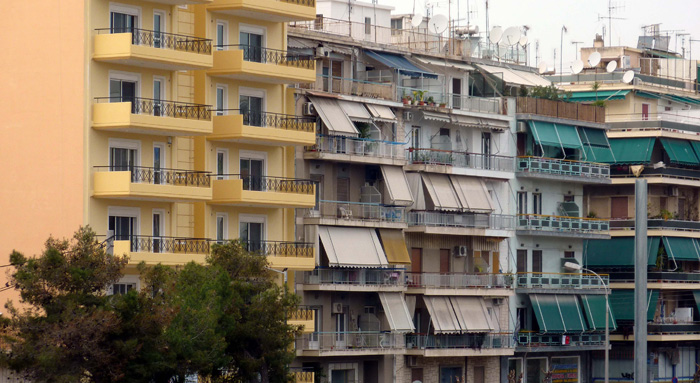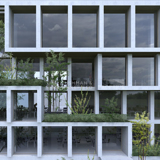According to the Directorate of Economic Analysis of the National Bank of Greece report for September 2023, the residential real estate market has not only regained demand-supply balance following a decade-long crisis, but is starting to experience supply-constrained price increases
The Greek residential real estate market had a buoyant start in 2023, with house prices – as measured by the Bank of Greece economy-wide house price index (HPI) – rising by a robust 14.5% y-o-y in Q1:2023, the strongest pace in more than 30 years.
The HPI increase in Greece outpaced by a wide margin the euro area average (+0.3% y-o-y in Q1:2023), reflecting the different phases of their respective housing market cycles. Indeed, in some euro area countries prices are declining, for the first time in more than a decade, due to tightened monetary policy and slowing economic growth (namely in Germany, Finland, Luxembourg, and Netherlands).
This increase also marks the 6th consecutive year of recovery after a decade-long crisis. In fact, Greece’s real estate market appears to have overcome the more recent headwinds from the Covid-19 pandemic and the energy-related inflation crisis.
Overall, the HPI has recorded a cumulative increase of c. 50% between Q3:2017 – its lowest point during the crisis – and Q1:2023, remaining, however, 14% below its all-time high level of Q3:2008. This recovery has been achieved after a prolonged period of rebalancing. Specifically, the advent of the Greek crisis led to a spike in the stock of unsold houses to c. 350K at their peak in 2012. The combination of the demand-supply disequilibrium and the broader economic crises led to a standstill in residential real estate investment and a sharp fall in house prices by 42%.
However, the large supply-demand imbalance has gradually closed, mainly arising from a decade of supply depreciation, with only minor new additions of housing units, combined with a recent pick-up in demand, initially from non-residents. As a result of the still limited new supply, low renovation activity and rising construction costs, HPI growth accelerated in 2022 and early 2023. The resilience of demand and the expectations for further price increases set the stage for a period of new investment, attracted by the strong market fundamentals.
Οι τρέχουσες τάσεις αλλά και τα βασικά ευρήματα της ανάλυσης επιβεβαιώνουν ότι η ελληνική αγορά ακινήτων βρίσκεται σε πιο
πρώιμο σημείο του κύκλου ανάκαμψης, σε σύγκριση με τις περισσότερες χώρες της Ευρωζώνης που παρέμειναν σε έντονα ανοδική τροχιά για τουλάχιστον μια δεκαετία, με αρκετές να έχουν εισέλθει σε φάση διόρθωσης, λόγω της αύξησης των επιτοκίων και της επιβράδυνσης της οικονομικής δραστηριότητας.
Οι ενδείξεις υπερβάλλουσας ζήτησης – τουλάχιστον όσον αφορά άμεσα εμπορεύσιμα ακίνητα – και το αυξημένο κόστος κατασκευής προοιωνίζουν ανθεκτική ανοδική τάση στις τιμές, σε ορίζοντα τουλάχιστον διετίας, παρά τις προκλήσεις που θέτει το νέο επιτοκιακό περιβάλλον διεθνώς.
Residential investment shrank to an all-time low, leading to the reduction of the supply overhang
Residential construction activity declined sharply beginning in 2010, supporting the adjustment of the market facing a large excess supply of housing created by the surge in residential construction in 2006-08. Low supply helped to offset the imbalance and was combined with a large drop in demand – after the onset of the Greek crisis in 2009 – leading to the build-up of a sizeable stock of unsold houses that peaked at around 300K housing units in 2012-13.
Moreover, adding to the excess supply, a number of property owners were forced to sell their non- primary residences under the pressure of declining disposable income and higher taxation, increasing further the available-for- sale housing stock in the peak year 2012 to 350Κ housing units.
The widening gap between demand and supply led to an unprecedented fall in HPI by 42% between 2008 and 2017.
In response to this imbalance and the price declines, annual building activity dropped by nearly 90% compared to its pre-crisis levels according to the residential building permits data (new issuance of 12K permits per annum, on average, in 2012-17, from c. 130K annually in 2001-07). Accordingly, residential investment in constant price terms, as reflected in national accounts data, plunged to €2.2 bn per year in 2012-20 from a peak of €24.9 bn in 2007 and an average of €16.0 bn in 1995-2010.
In addition, the supply of older buildings was further reduced due to increasing depreciation, as renovation activities also plummeted. Indeed, c. 55% of currently existing residential buildings have been constructed before 1980, and their depreciation rate has accelerated as safety and energy-efficiency standards increase.
National buildings census and building permits data suggest that the average age of the housing stock is estimated to have increased to above 40 years in 2021 from c. 34 years in 2011. The effective deterioration in the quality of the housing stock was actually higher, since real estate investment by households on existing homes remained lower than the depreciation of fixed capital over the period 2011-22, entailing an estimated net cumulative divestment of c. €35 bn. This adjustment has been translated by NBG Research into a net cumulative drop in the tradable housing stock by c. 250K housing units.
The calculation includes an annual physical depreciation rate of the existing housing stock of 0.5%, but also takes into account c.130K of new houses built in 2013-22. The implied cumulative adjustment reduced the outstanding stock to c. 100K in 2022. However, the strengthening of demand in recent years has now given rise to a small supply shortage since 2022.















